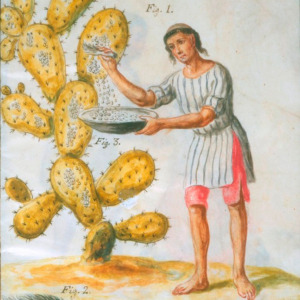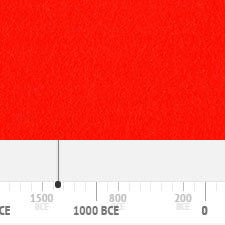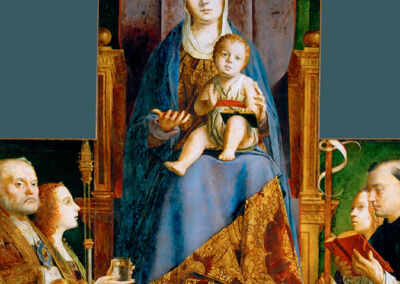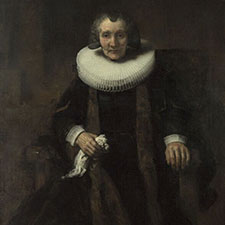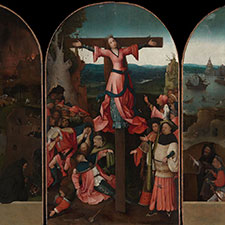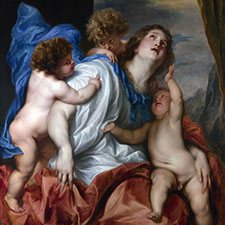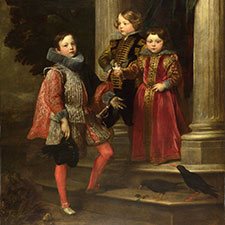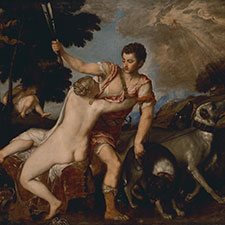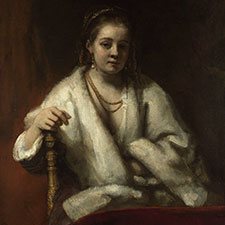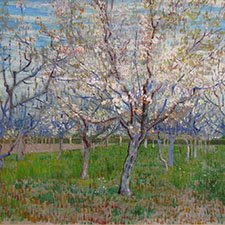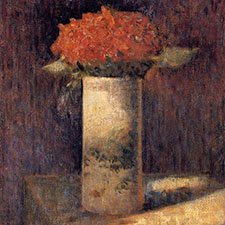Carmine Cochineal
Natural organic pigmentComposition and Properties of Carmine Cochineal
The name carmine is used for two similar pigments derived from different insects. Cochineal is produced from (Dactylopius coccus) a scale insect living as a parasite on the cacti mainly in South America. The main colorant of this pigment is carminic acid.
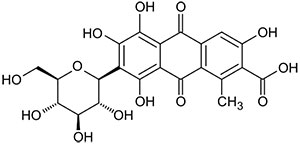
The pigment is not very stable unless it is stored in a dry place and is not lightfast and fades even under incandescent illumination. It cannot be used in acidic and alkaline conditions.
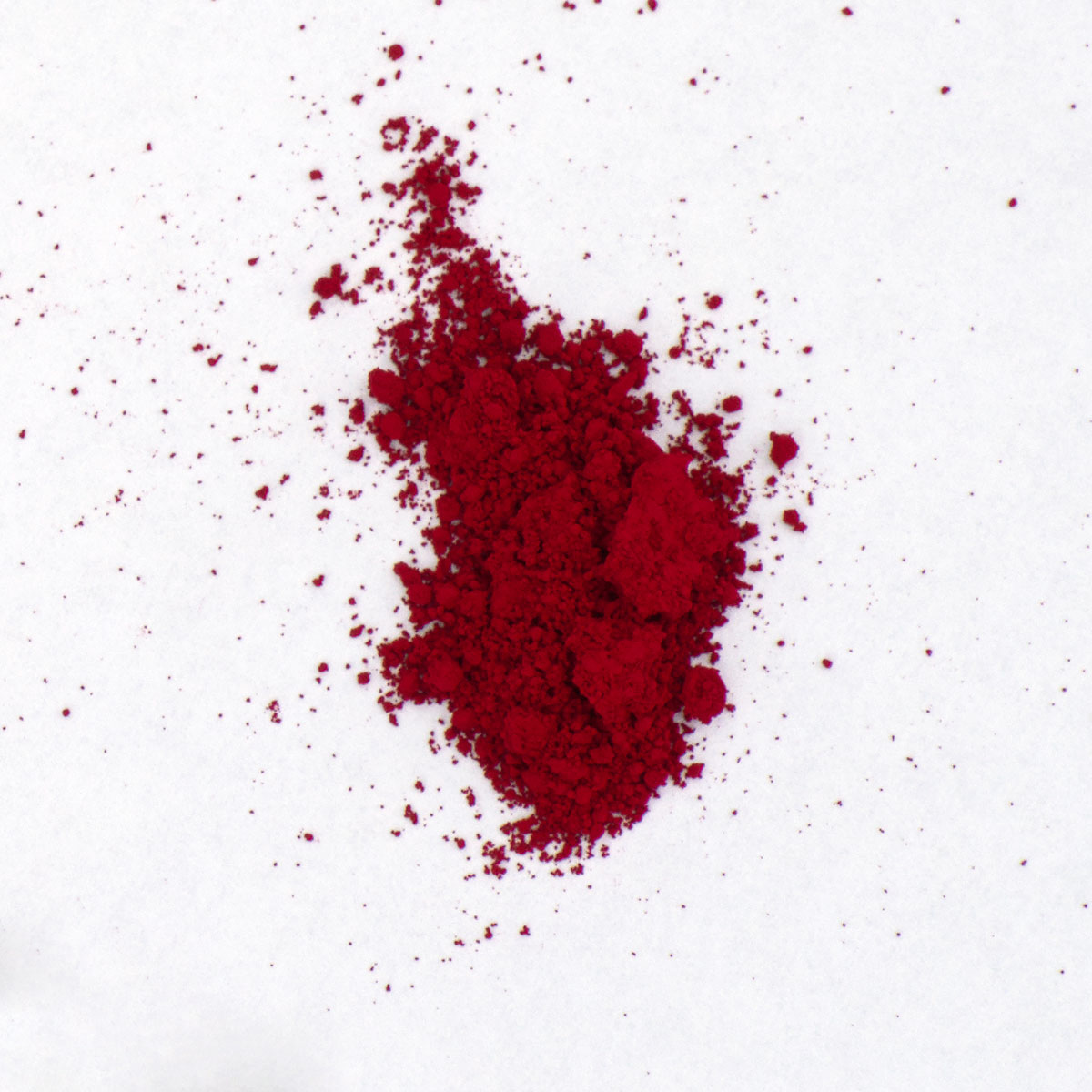
Pigment

Painted swatch
Names
Alternative names
Cochenile
Color Index
Cochineal: Natural red 4 (NR 4), C.I. 75470
Word origin
Cochineal: from French cochenille (16c.), probably from Spanish cochinilla, from a diminutive of Latin coccinus “scarlet-colored,” from coccum “berry (actually an insect) yielding scarlet dye” But some sources identify the Spanish source word as cochinilla “wood louse” (a diminutive form related to French cochon “pig”).
From Online Etymology Dictionary
Karmin Cochenille
German
Carmin cochenille
French
Carminio cocciniglia
Italian
Carmín cochinilla
Spanish
Preparation
The preparation of carmine always consists of two steps. The dried insects are first boiled in water in order to extract the carminic. The second step is the precipitation of the pigment by adding alum to the clear filtered solution. Aluminum ions contained in alum form a complex salt of the intense crimson-red colour.
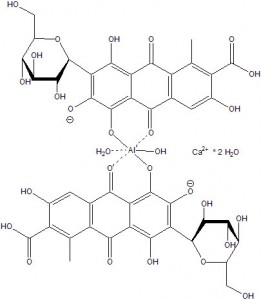
Video: 'Nocheztli - Making Cochineal Lake Pigment' by just1pin
References
(1) Kirby, J., Spring, M., Higgitt, C. ‘The Technology of Red Lake Pigment Manufacture: Study of the Dyestuff Substrate‘. National Gallery Technical Bulletin Vol 26, pp 71–87. Available as pdf.
(2) J. Kirby, M. Spring and C. Higgitt, The Technology of Eighteenth- and Nineteenth-Century Red Lake Pigments, National Gallery Technical Bulletin, Vol 28, 2007.
History of Use
Cochineal was used in the Americas for dyeing textiles as early as 700 B.C. The excellent review of B. Anderson gives a thorough account of the history of cochineal and its use in oil painting (1). The scientists of the National Gallery London investigated paintings in their gallery and found carmine in a multitude of them (2).
References
(1) Barbara C. Anderson, Evidence of Cochineal’s Use in Painting, The Journal of Interdisciplinary History, XLV:3 (Winter, 2015), 337– 366.
(2) Jo Kirby and Raymond White, The Identification of Red Lake Pigment Dyestuffs and a Discussion of their Use. National Gallery Technical Bulletin, Vol 17, 1996, pp. 56-80. Available as pdf.
(3) Elena Phipps, Cochineal Red: The Art History of a Color, Metropolitan Museum of Art, 2010.
Examples of use
Video: 'Cochineal beetles in art | Titian’s ‘Diana and Callisto’' by National Gallery London
Video: Cochineal Red: The Art History of a Color by The Metropolitan Museum of Art
Gerard David, Virgin and Child
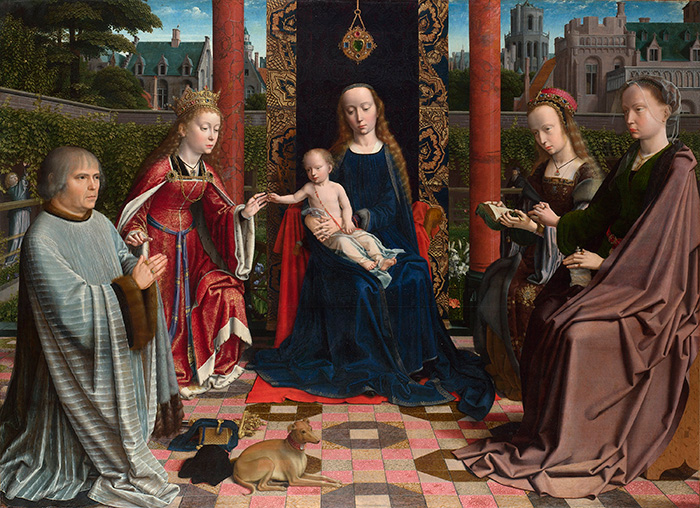
Red dress of St Catherine (5): carmine cochineal
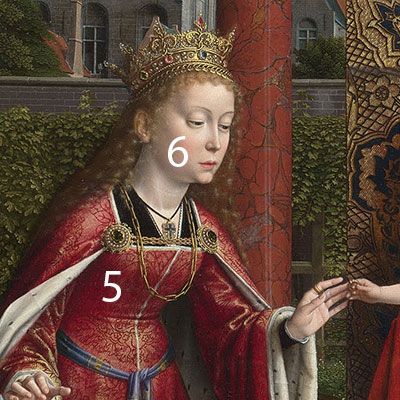
Identification
Fiber optics reflectance spectra (FORS)

Spectra by A. Cosentino, Cultural Heritage Science Open Source (CHSOS)
Raman Spectrum
Raman Spectrum in: Ref (4), p. 15
X-Ray Fluorescence Spektrum (XRF)
XRF Spectrum in the Free XRF Spectroscopy Database of Pigments Checker, CHSOS website.
References
(1) Christina Bisulca, Marcello Picollo, Mauro Bacci, Diane Kunzelman, UV-VIS-NIR Reflectance Spectroscopy
of Red Lakes In Paintings, 9th International Conference on NDT of Art, Jerusalem Israel, 25-30 May 2008. Available as pdf.
(2) Whitney, A. V., et al. An innovative surface-enhanced Raman spectroscopy (SERS) method for the identification of six historical red lakes and dyestuffs. Journal of Raman Spectroscopy 37(10), 2006, 993–1002. Available as pdf.
(3) Stathopoulou K, Valianou L, Skaltsounis AL, Karapanagiotis I, Magiatis P, Structure elucidation and chromatographic identification of anthraquinone components of cochineal (Dactylopius coccus) detected in historical objects, Anal Chim Acta. 2013 Dec 4;804:264-72. doi: 10.1016/j.aca.2013.09.053. Epub 2013 Oct 5.
(4) J. Kirby and R. White, The Identification of Red Lake Pigment Dyestuffs and a Discussion of their Use, National Gallery Technical Bulletin, Vol. 17, (1996), pp. 56-80. Available as pdf.
(5) Catherine M. Schmidt, Karen A. Trentelman, 1064 nm Dispersive Raman Micro-Spectroscopy For the In-situ Identification of Organic Red Colorants, e-Preservation Science, e-PS, 2009, 6, 10-21. Available as pdf.

Microphotograph
image © Volker Emrath
Further Reading
References
(1) Schweppe, H. and Roosen-Runge, H. Carmine – Cochineal Carmine and Kermes Carmine, in Artists’ Pigments. A Handbook of Their History and Characteristics, Vol. 1: Feller, R.L. (Ed.) Oxford University Press 1986, p. 255 – 298. Available as pdf from the National Gallery of Art.
(2) J. Kirby, M. Spring and C. Higgitt, The Technology of Eighteenth- and Nineteenth-Century Red Lake Pigments, National Gallery Technical Bulletin, Vol 28, 2007.
(3) Jo Kirby and Raymond White, The Identification of Red Lake Pigment Dyestuffs and a Discussion of their Use. National Gallery Technical Bulletin, Vol 17, 1996, pp. 56-80. Available as pdf.
(4) Kirby, J., Spring, M., Higgitt, C. ‘The Technology of Red Lake Pigment Manufacture: Study of the Dyestuff Substrate‘. National Gallery Technical Bulletin Vol 26, pp 71–87. Available as pdf.
(5) Elena Phipps, Cochineal Red: The Art History of a Color, Metropolitan Museum of Art, 2010.
(6) S. Muntwyler, J. Lipscher, HP. Schneider, Das Farbenbuch, 2nd. Ed., 2023, alataverlag Elsau, pp. 140-141 and 356-359.

